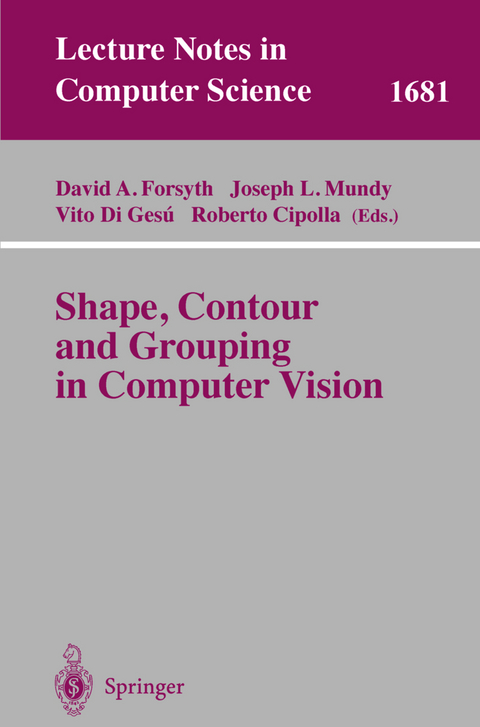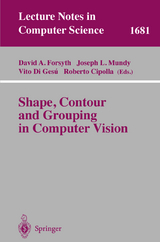Shape, Contour and Grouping in Computer Vision
Springer Berlin (Verlag)
978-3-540-66722-3 (ISBN)
An Empirical-Statistical Agenda for Recognition.- A Formal-Physical Agenda for Recognition.- Shape.- Shape Models and Object Recognition.- Order Structure, Correspondence, and Shape Based Categories.- Quasi-Invariant Parameterisations and Their Applications in Computer Vision.- Shading.- Representations for Recognition Under Variable Illumination.- Shadows, Shading, and Projective Ambiguity.- Grouping.- Grouping in the Normalized Cut Framework.- Geometric Grouping of Repeated Elements within Images.- Constrained Symmetry for Change Detection.- Grouping Based on Coupled Diffusion Maps.- Representation and Recognition.- Integrating Geometric and Photometric Information for Image Retrieval.- Towards the Integration of Geometric and Appearance-Based Object Recognition.- Recognizing Objects Using Color-Annotated Adjacency Graphs.- A Cooperating Strategy for Objects Recognition.- Statistics, Learning and Recognition.- Model Selection for Two View Geometry:A Review.- Finding Objects by Grouping Primitives.- Object Recognition with Gradient-Based Learning.
| Erscheint lt. Verlag | 3.11.1999 |
|---|---|
| Reihe/Serie | Lecture Notes in Computer Science |
| Zusatzinfo | VIII, 350 p. |
| Verlagsort | Berlin |
| Sprache | englisch |
| Maße | 156 x 234 mm |
| Gewicht | 515 g |
| Themenwelt | Informatik ► Grafik / Design ► Digitale Bildverarbeitung |
| Mathematik / Informatik ► Informatik ► Software Entwicklung | |
| Informatik ► Theorie / Studium ► Künstliche Intelligenz / Robotik | |
| Schlagworte | Bildverarbeitung • Cognition • computer vision • Hardcover, Softcover / Informatik, EDV/Informatik • HC/Informatik, EDV/Informatik • Image Processing • learning • machine learning • Mustererkennung • Object recognition • Object Representation • pattern recognition • Shading |
| ISBN-10 | 3-540-66722-9 / 3540667229 |
| ISBN-13 | 978-3-540-66722-3 / 9783540667223 |
| Zustand | Neuware |
| Haben Sie eine Frage zum Produkt? |
aus dem Bereich




